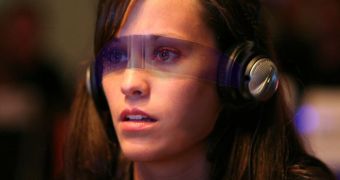When most people say augmented reality, they immediately think about video games, where this system could make the gaming experiences much more rich. Television and movies jump to mind immediately afterwards, but researchers are now imaging a use for AR that surpasses all that. They argue that a large number of car crashes nowadays happens because of blind spots, where drivers cannot see other cars coming in from around the corner. With AR, it may be possible to make these blind spots transparent, and thus give drivers a chance to avoid disaster, NewScientist reports.
The newly developed system that essentially allows you to see through walls relies on two video cameras. One of them is filming the images you would normally see, while another one films behind the obstacles, and then relays the image back to a computer. The machine then superimposes the video feed from the second camera onto the one from the first, thus creating the illusion of transparency in the object you see. The method can naturally be applied to any kind of obstacle.
According to Carnegie Mellon University expert Yaser Sheikh, who led the team that developed the new system, the technology needed to combine the two feeds was the most challenging part of the entire project. The thing is that the scenes happening behind the obstacle need to be skewed, so that they appear to the user as if he or she is looking straight at them. The thing is that they are not, and the second video camera – in the forward position – is angled when it captures the images.
The way the tune-up is accomplished is by both cameras identifying specific points in the landscape, and then fitting them together in a matter of milliseconds. This allows for a real-time feed to be relayed to the driver. Anything less than that would be completely useless, as rapid response is absolutely necessary if an accident is to be avoided. The research team also had to develop a new type of software that transformed moving objects into images, without causing any distortions and false perceptions in the driver.

 14 DAY TRIAL //
14 DAY TRIAL //